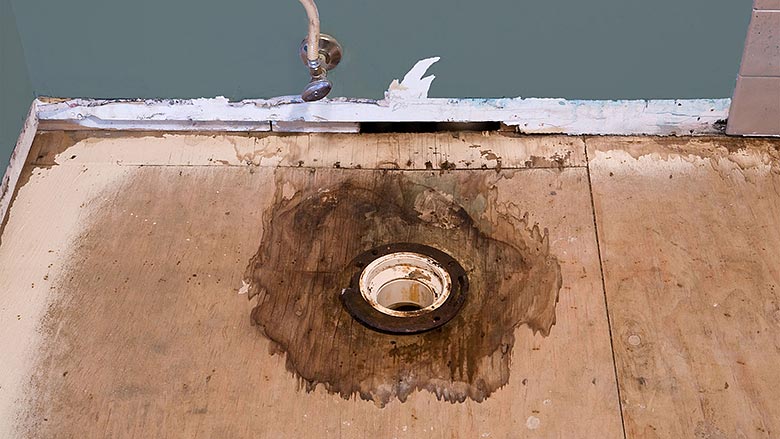How do you feel when it comes to Common Causes of Water Damage in a Bathroom?

The washroom is extremely vulnerable for moist build-up as well as possible water damages due to the regular use water in it. This post supplies simple evaluation methods to assist identifying water damage hazards.
The regular use of water in the shower room makes it very at risk for wet accumulation and potential water damage. By examining it frequently, you can minimize water relevant problems.
The complying with collection of assessments is simple to do as well as must be done as soon as in every three months in order to maintain your washroom healthy and also to avoid prospective water problems triggered by the tub, the shower, pipeline joints as well as plumbing, sinks, closets, as well as the commode
Do not forget executing these examinations and also be detailed while executing them. Bear in mind that these basic assessments can save you a lot of money by providing very early indicators for water damage
Sinks and Cabinets
Sinks and cabinets are revealed to dampness as well as humidity daily as well as are usually ignored. Inspect regularly under the sink as well as on the counter top above it. Fix any kind of drip in the trap as it might suggest drainpipe issues. Take a look around the sink, slow draining pipes may indicate a blocked drain. Change sink seals if they are fractured or loosened.
Bath tub and also Shower
The shower as well as tub need special focus as well as maintenance. Examine the floor tiles as well as change if split. Make certain that there is no missing cement between the tiles. Evaluate as well as replace cracked caulking at joints where the wall surfaces fulfill the flooring or the bath tub. Obstructed drains as well as pipes troubles will prevent the bath tub from drying and might indicate significant issues beneath the bath tub. Speak with a professional immediately to stop structural damages. Take note of stainings or soft areas around the bath tub walls as they might indicate an inner leak.
Plumbing
Signs for water damages are hard to find because the majority of pipes are mounted inside the walls.
Pay unique attention to flooring and also walls dampness and spots as they might suggest an invisible plumbing issue. Examine wetness levels in adjacent rooms also.
The Commode
The toilet is a prone water joint. Check the water lines as well as look for leaks around the bathroom seat, in the tube, and under the water storage tank. If you spot any kind of signs of wetness on the flooring around the commode, check for leakages in the toilet edge and storage tank seals.
Know that hanging toilet bowl antiperspirants raises the chances for blockages.
10 TIPS TO PREVENT WATER DAMAGE IN THE BATHROOM
The average household uses approximately 80-100 gallons of water per person per day. For a family of 4, that's almost 2,500 gallons of water a week! The largest portion of this consumption comes from bathroom use. Flushing the toilet uses the most water, followed by taking a shower or bath. With that much water running through the home, water damage in the bathroom is bound to happen. Knowing how to spot signs of a water leak is essential to preventing long-term damage. This guide provides you with tips to reduce the impact of water damage on your bathroom.
CAUSES OF BATHROOM WATER DAMAGE
- Pipe breaks are the most common cause of water damage we see in our daily jobs. The age of a pipe plays a large role in a pipe break as well as corrosion. Over time, the metal begins to break down, allowing water to escape. Frozen pipe breaks are also a concern in the winter months.
- Toilet overflows caused by paper products or children flushing inappropriate items.
- Degraded caulking around the toilet or bathtub can allow water seepage, sometimes behind the fixture, into the subfloor or walls.
- Condensation forms when the water in a pipe is cooler than the air temperature. Beads of water form on the exterior of the pipes, sometimes so much so that the water begins to drip and pool below.
- Sink or shower backups created by poor drainage.
HOW TO PREVENT WATER DAMAGE IN YOUR BATHROOM
- Inspect your toilet supply line for worn or frayed hoses and replace them as needed.
- Winterize your plumbing to prevent a frozen pipe break.
- Use vent fans to prevent condensation that can lead to mold growth.
- Routinely check and replace degraded caulking around your toilet or bathtub.
- Increase the temperature in your toilet tank and insulate your pipes during the warm summer months to keep condensation from forming.
- Use child safety locks on the toilets.
- Flush only toilet paper. "Flushable" wet wipes are actually not good for your plumbing system. Additionally, feminine hygiene products should not be flushed.
- Prevent water from escaping the tub or shower. Make sure shower curtains are in good condition. Inspect shower doors and replace the seal strip if necessary.
- Wipe up any water that accumulates on the floor and use bath mats. Water left to sit can cause damage to the tiles and flooring.
- Refrain from using bath products containing heavy oils to avoid a clogged drain.

I found that content on How to Fix a Water Damage Bathroom when doing a lookup on the web. Appreciated our review? Please share it. Help others check it out. We enjoy reading our article about How to Fix a Water Damage Bathroom.
Book Service
Comments on “Avoiding Water Damage in the Bathroom”